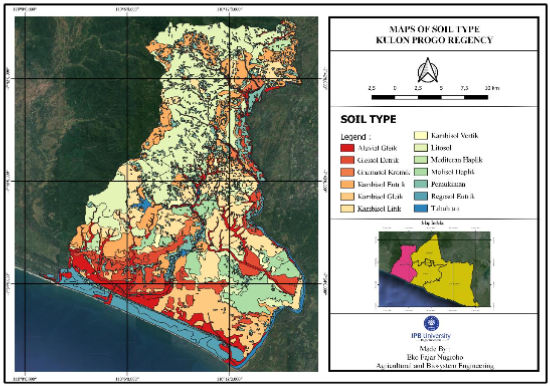The Influence of Soil Bearing Capacity on The Application of Agricultural Machinery in Kulon Progo
Abstract
A critical factor in the enhancement of agricultural productivity is the utilization of agricultural tools and machinery. The challenges posed by reduced labor, narrow rice fields, and deep surface soil layers create significant difficulties for such equipment. Soil penetration resistance refers to the capacity of soil to resist the loads applied to it. The pressure exerted on the soil by agricultural machinery and tools hinders their effective functioning. The present study has been designed to determine the influence of soil evaporation resistance value on the type of agricultural machinery that can be applied. The measurement of soil carrying capacity value is measured in 3 land categories. The analysis was carried out by comparing the value of soil penetration resistance with the tractor's trafficability index. This research was conducted from February to July 2024, and the measured penetration resistance in the sample land was found to be in the range of 0.55–0.90 at a depth of 10 cm and 0.82–1.14 at a depth of 15 cm. A comparison of the penetration resistance values with the trafficability index, which delineates the operational parameters for agricultural machinery, revealed that four-wheel tractors and combine harvesters would be unable to operate on the sample land. The application of these machines would result in subsidence levels of more than 15 cm for category 1 and 2 and more than 20 cm for category 3.
Authors

This work is licensed under a Creative Commons Attribution-ShareAlike 4.0 International License.
Authors submitting manuscripts should understand and agree that copyright of manuscripts of the article shall be assigned/transferred to Jurnal Keteknikan Pertanian. This work is licensed under a Creative Commons Attribution-ShareAlike 4.0 International License (CC BY-SA) where Authors and Readers can copy and redistribute the material in any medium or format, as well as remix, transform, and build upon the material for any purpose, but they must give appropriate credit (cite to the article or content), provide a link to the license, and indicate if changes were made. If you remix, transform, or build upon the material, you must distribute your contributions under the same license as the original.

